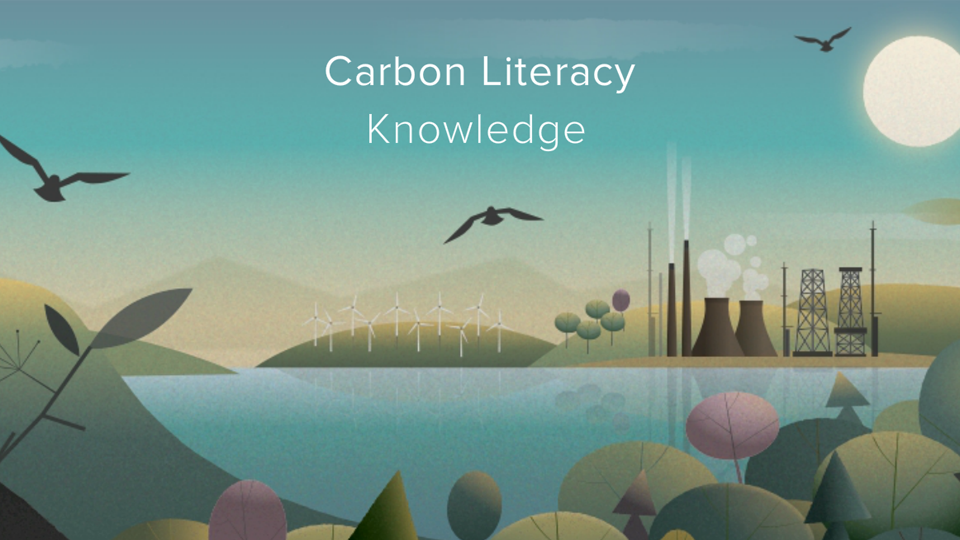Resources
Carbon Literacy Resources
Welcome to our Resources pages. These pages lay out a wealth of resources for you to use in creating a Carbon Literacy course.
Carbon Literacy is being delivered by scores of people and organisations working in partnership with the project including schools, employers, universities, community groups, hospitals, individual trainers and charities. To that end, we want to be able to help our partners deliver the best training that they can and support this by making as many resources available to our partners as possible.
Resources range from “starters for ten” to help you communicate to non-expert audiences or advocate for a project internally to the detailed information, exercises and resources to support you in developing your training response and help you deliver Carbon Literacy to your audience.
Getting started
We have organised information so that you can use it in various ways. The sections below should be self-explanatory, but drop a mail to [email protected] if all is not clear or you have any specific queries or resources we can add.
We are well aware that there is still more we can do to make this information more useful and accessible and we intend to continue to develop our resources, however generally we think it is better to share some of what we’ve got so that it can help you right now and then improve it as we go along.
We hope you find these resources useful and they support you in participating in The Carbon Literacy Project.
The Carbon Literacy Course Kit

The Course Kit is a free resource that can support the creation of your Carbon Literacy course.
The Course Kit contains Pre-approved Materials and a Resource Document:
- The Pre-approved Materials are slides that you can use in your own Carbon Literacy course – either as they are or as inspiration. These slides have come from our own Carbon Literacy Toolkits, so you can rest assured that they have been tested and approved by us.
- The Resource Document is a compilation of useful links, articles, and advice which can support the creation of your Carbon Literacy course.
These materials provide some of the key ingredients of your Carbon Literacy course, though you will also need to develop some of your own content to ensure your course is relevant to your audience.
If you would like to access the Course Kit, click here.
E-Learning

The Carbon Literacy: Knowledge (CLK) E-learning Framework has been developed to assist organisations and trainers in delivering Carbon Literacy. The framework meets almost all of the requirements of the “Knowledge” component of the Carbon Literacy Standard.
Because of the requirement to work with others, a learner cannot currently become fully Carbon Literate through online learning alone, but completion of the e-learning course generates a CL: Knowledge interim certificate, with the learner being approximately half-way through their “day’s worth” of training to become Carbon Literate.
Interested in using E-Learning as part of your Carbon Literacy journey? Get in touch with us for more information.
Support Documents for Trainers
We’ve created these new documents to support trainers in the delivery of Carbon Literacy training.
The Marking Guide is by no means extensive but provides further insight into how we assess the evidence.
The CL Certification Guide for Trainers outlines the process of certification, explains why it is so important, and shares tips on how you can prevent certification drop-off.
The Trainer Code of Conduct was developed in partnership with our CL Pioneers Network as a guideline to how new and existing trainers should deliver Carbon Literacy for the best experience for them as trainers, as well as for your learners.
CL Certification: A Guide for Trainers
Use of AI in Evidence Submission